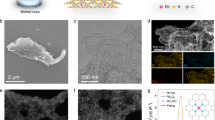Abstract
Hydrogen peroxide decomposition is a major issue in medicine, energy, and environmental sciences. For example, findings could lead to the development of efficient H2O2 removal systems to clean wastewaters. Here I tested several homogeneous catalysts for H2O2 decomposition. I found that a dihydride version of a ruthenium complex coordinated by a phosphorous–nitrogen–phosphorus pincer ligand with isopropyl substituents on the phosphorus (PNPiPr) was superior to the hydride chloride congener. This is in line with previous activity studies with PNPiPr ruthenium catalysts. Moreover, no additives are necessary, further enhancing the potential scope of this system. By the use of the homogeneous catalyst Ru(H)2(PNPiPr)CO, it is possible to obtain turnover frequencies reaching 180,000 h−1 and turnover numbers more than 14,000 in a neutral hydrogen peroxide aqueous solution at 25 °C. Overall, findings reveal an efficient and stable system for hydrogen peroxide decomposition to oxygen and water under mild conditions.
Graphical Abstract

Similar content being viewed by others
References
Alberico E, Nielsen M (2015) Towards a methanol economy based on homogeneous catalysis: methanol to H2 and CO2 to methanol. Chem Commun 51:6714–6725. doi:10.1039/C4CC09471A
Alberico E, Sponholz P, Cordes C et al (2013) Selective hydrogen production from methanol with a defined iron pincer catalyst under mild conditions. Angew Chem Int Ed 52:14162–14166. doi:10.1002/anie.201307224
Baratta W, Bossi G, Putignano E, Rigo P (2011) Pincer and diamine Ru and Os diphosphane complexes as efficient catalysts for the dehydrogenation of alcohols to ketones. Chem A Eur J 17:3474–3481. doi:10.1002/chem.201003022
Bielinski EA, Lagaditis PO, Zhang Y et al (2014) Lewis acid-assisted formic acid dehydrogenation using a pincer-supported iron catalyst. J Am Chem Soc 136:10234–10237. doi:10.1021/ja505241x
Campos M, Siriwatcharapiboon W, Potter RJ, Horswell SL (2013) Selectivity of cobalt-based catalysts towards hydrogen peroxide formation during the reduction of oxygen. Catal Today 202:135–143. doi:10.1016/j.cattod.2012.05.015
Clarke ZE, Maragh PT, Dasgupta TP et al (2006) A family of active iridium catalysts for transfer hydrogenation of ketones. Organometallics 25:4113–4117. doi:10.1021/om060049z
De Boer JW, Brinksma J, Browne WR et al (2005) Cis-Dihydroxylation and epoxidation of alkenes by [Mn2O(RCO2)2(tmtacn)2]: tailoring the selectivity of a highly H2O2-efficient catalyst. J Am Chem Soc 2:7990–7991
Gunanathan C, Milstein D (2011) Metal–ligand cooperation by aromatization–dearomatization: a new paradigm in bond activation and “Green” catalysis. Acc Chem Res 44:588–602. doi:10.1021/ar2000265
Kakuda S, Peterson RL, Ohkubo K et al (2013) Enhanced catalytic four-electron dioxygen (O2) and two-electron hydrogen peroxide (H2O2) reduction with a copper(II) complex possessing a pendant ligand pivalamido group. J Am Chem Soc 135:6513–6522. doi:10.1021/ja3125977
Koehne I, Schmeier TJ, Bielinski EA et al (2014) Synthesis and structure of six-coordinate iron borohydride complexes supported by PNP ligands. Inorg Chem 53:2133–2143. doi:10.1021/ic402762v
Kohl SW, Weiner L, Schwartsburd L et al (2009) Consecutive thermal H2 and light-induced O2 evolution from water promoted by a metal complex. Science 324:74–77. doi:10.1126/science.1168600
Kundu P, Sinha AK, Bhattacharyya TK, Das S (2013) MnO2 nanowire embedded hydrogen peroxide monopropellant MEMS thruster. J Microelectromech Syst 22:406–417. doi:10.1109/JMEMS.2012.2226929
Kuriyama W, Matsumoto T, Ogata O et al (2012) Catalytic hydrogenation of esters. development of an efficient catalyst and processes for synthesising (R)-1,2-propanediol and 2-(l-Menthoxy)ethanol. Org Process Res Dev 16:166–171. doi:10.1021/op200234j
Li Y, Nielsen M, Li B et al (2015a) Ruthenium-catalyzed hydrogen generation from glycerol and selective synthesis of lactic acid. Green Chem 17:193–198. doi:10.1039/C4GC01707B
Li Y, Sponholz P, Nielsen M et al (2015b) Iridium-catalyzed hydrogen production from monosaccharides, disaccharide, cellulose, and lignocellulose. ChemSusChem 8:804–808. doi:10.1002/cssc.201403099
Lisanti MP, Martinez-Outschoorn UE, Lin Z et al (2011) Hydrogen peroxide fuels aging, inflammation, cancer metabolism and metastasis: the seed and soil also needs “fertilizer”. Cell Cycle 10:2440–2449. doi:10.4161/cc.10.15.16870
Milstein D (2010) Discovery of environmentally benign catalytic reactions of alcohols catalyzed by pyridine-based pincer Ru complexes, based on metal–ligand cooperation. Top Catal 53:915–923. doi:10.1007/s11244-010-9523-7
Monney A, Barsch E, Sponholz P et al (2014) Base-free hydrogen generation from methanol using a bi-catalytic system. Chem Commun 50:707–709. doi:10.1039/C3CC47306F
Musa S, Fronton S, Vaccaro L, Gelman D (2013) Bifunctional ruthenium(II) PCP pincer complexes and their catalytic activity in acceptorless dehydrogenative reactions. Organometallics 32:3069–3073. doi:10.1021/om400285r
Nielsen M, Kammer A, Cozzula D et al (2011) Efficient hydrogen production from alcohols under mild reaction conditions. Angew Chem Int Ed 50:9593–9597. doi:10.1002/anie.201104722
Nielsen M, Junge H, Kammer A, Beller M (2012) Towards a green process for bulk-scale synthesis of ethyl acetate: efficient acceptorless dehydrogenation of ethanol. Angew Chem Int Ed 51:5711–5713. doi:10.1002/anie.201200625
Nielsen M, Alberico E, Baumann W et al (2013) Low-temperature aqueous-phase methanol dehydrogenation to hydrogen and carbon dioxide. Nature 495:85–89. doi:10.1038/nature11891
Páez CA, Liquet DY, Calberg C et al (2011) Study of photocatalytic decomposition of hydrogen peroxide over ramsdellite-MnO2 by O2-pressure monitoring. Catal Commun 15:132–136. doi:10.1016/j.catcom.2011.08.025
Roos K, Siegbahn PEM (2013) Activation of dimanganese class Ib ribonucleotide reductase by hydrogen peroxide: mechanistic insights from density functional theory. Inorg Chem 52:4173–4184. doi:10.1021/ic3008427
Spasyuk D, Smith S, Gusev DG (2012) From esters to alcohols and back with ruthenium and osmium catalysts. Angew Chem Int Ed 51:2772–2775. doi:10.1002/anie.201108956
Sponholz P, Mellmann D, Cordes C et al (2014) Efficient and selective hydrogen generation from bioethanol using ruthenium pincer-type complexes. ChemSusChem 7:2419–2422. doi:10.1002/cssc.201402426
Tsai MC, Rick J, Hwang BJ (2013) Design of Pt-based bimetallic alloys for the oxidation of H2O2: a combined computational and experimental approach. ChemCatChem 5:1709–1712. doi:10.1002/cctc.201200816
Wang Z, Bush RT, Sullivan LA, Liu J (2013) Simultaneous redox conversion of chromium (VI) and arsenic (III) under acidic conditions. Environ Sci Technol 47:6486–6492
Yoon DS, Won K, Kim YH et al (2007) Continuous removal of hydrogen peroxide with immobilised catalase for wastewater reuse. Water Sci Technol 55:27–33. doi:10.2166/wst.2007.016
Acknowledgments
M.N. thanks Leibniz-Institut für Katalyse e.V., the Danish Council for Independent Research (#12-131997), and Marie Curie FP7 International Outgoing Fellowship (IOF, #327565) for financial support.
Author information
Authors and Affiliations
Corresponding author
Rights and permissions
About this article
Cite this article
Nielsen, M. Efficient hydrogen peroxide decomposition to oxygen and water catalysed by a ruthenium pincer complex. Environ Chem Lett 14, 359–365 (2016). https://doi.org/10.1007/s10311-016-0576-0
Received:
Accepted:
Published:
Issue Date:
DOI: https://doi.org/10.1007/s10311-016-0576-0




